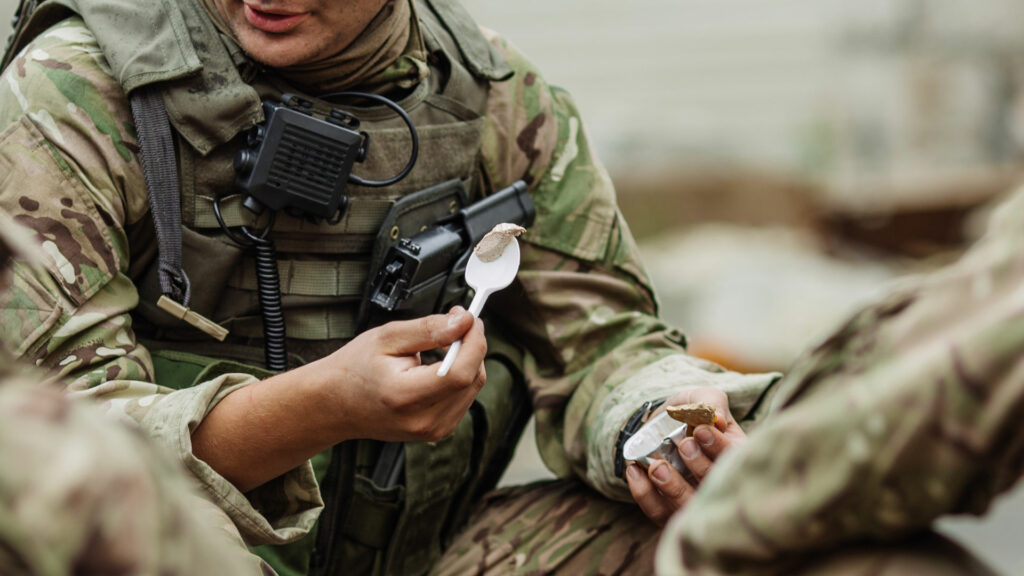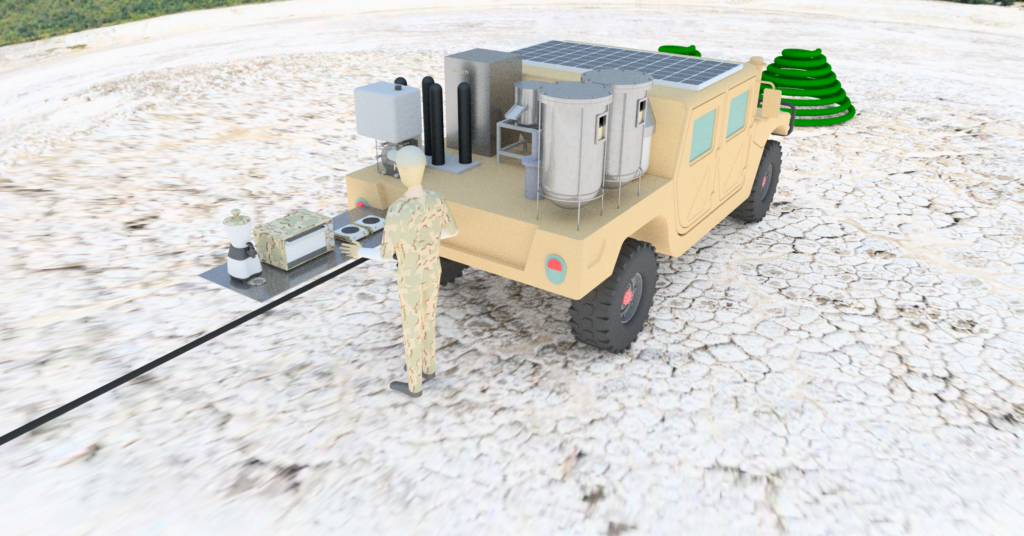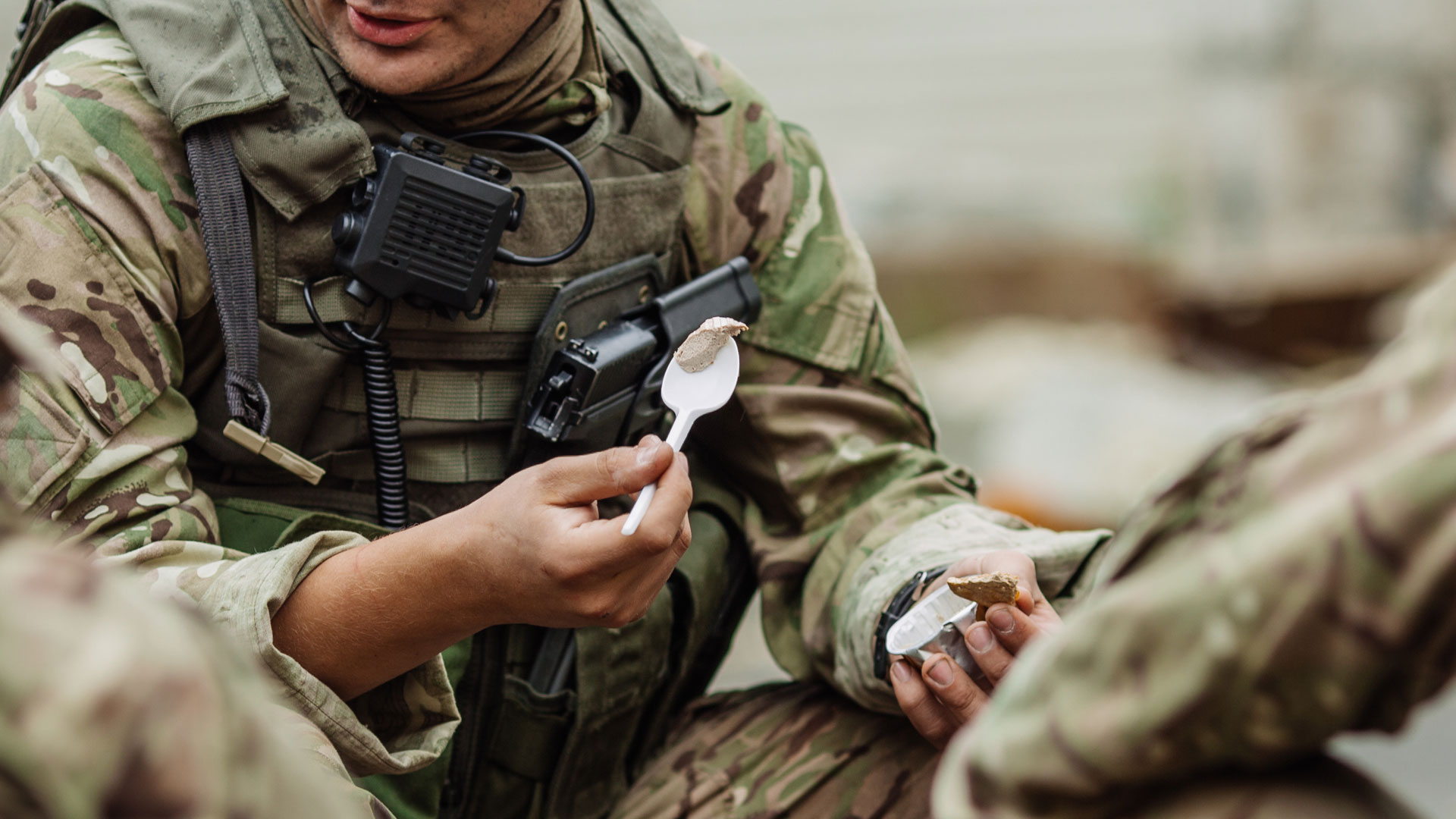
Food from Air for Distributed Meals (FADR) seeks to produce nutritious food on demand, aiding disaster relief efforts and military operations.
In a humanitarian crisis, people may be cut off from food sources and critical supply chains. Relief efforts must include sufficient provisions to support those affected by the disaster, as well as military and emergency personnel. These resources create a serious logistical burden and take up space that could be used for other necessities.
SRI International is working with industry collaborators to design a portable system that uses microbes to produce nutritious food on site. The project, funded by the Defense Advanced Research Projects Agency’s (DARPA) Cornucopia program, is known as Food from Air for Distributed Rations or FADR. The goal is to be able to generate meals quickly and with minimal inputs, ensuring that relief efforts and military operations have the resources they need while simultaneously reducing their logistics burden and supply chain.
“If something happens that disrupts the food supply, it could have catastrophic humanitarian impacts and threaten global stability,” said Elisabeth Perea, a senior chemical engineer at SRI and the principal investigator on the project. “We want to produce nutritionally complete—but also flavorful and appealing—food at the point of use using only air, water, and electricity as our major feedstocks.”
Many of us regularly eat food produced with microbes. Yogurt, cheese, bread, and alcohol all rely on microbial cultures to digest certain ingredients and release molecules that create the textures and flavors we seek. But instead of feeding on the starches in flour or the lactose in dairy, the microbes in the FADR system will get everything they need to create proteins, carbohydrates, fats, and fiber from air and water, with the addition of a bit of electricity.
Key collaborators on the FADR project, Kiverdi and Air Protein, have already created a process that uses microbes to produce protein. Using only elements and molecules derived from air, water, and renewable power, the biotechnology company is able to grow and dry a protein-rich flour. Another key collaborator on the project, Nitricity, is miniaturizing its renewable energy-powered fertilizer production system to provide the fixed nitrogen required by the microbial process.
Perea and her colleagues are helping to refine these processes to make them as efficient and portable as possible and will also be incorporating them with a microalgae cultivation process, which will create additional nutrients and flavors. The same tools and techniques that SRI researchers have used to engineer high-yield algae production processes for biofuel will now be used to optimize the carbohydrate and other nutrient outputs necessary for a complete meal.
“We’re mixing the two bioprocesses to get a product that can be tailored to your desired nutritional content,” Perea said. “And that also gives us two sources of potential flavors or other important food formulation properties, like textures.”
While the initial focus is on nutritional profile, the FADR team also aims to develop food that is flavorful and appetizing. This means they need to both engineer the bioprocesses to create the right chemical compounds for certain flavors and design techniques to turn a microbial broth or flour into something that has the texture of typical food. In the early stages, they will achieve the consistency of puddings and smoothies, but eventually they will strive for more complex textures, such as that of jerky or a protein bar.
Altogether, the FADR system will look like a combination of a microbrewery and a commercial kitchen packed into the back of a single Humvee along with an expandable algae farm. With that equipment, the researchers intend to replace the industrial manufacturing, processing, packaging, and shipping that is currently required for the standard military Meals Ready to Eat (MRE) rations, and hopefully create something that tastes better too.

Image credit: Jin-Ping Lim, Sr. Chemical Engineering Manager, SRI International
“There are many resources that are required for getting food to where it’s needed, and that’s what we’re trying to cut out by producing the food right on location,” Perea said. “This type of system would reduce the carbon footprint and the lifecycle impact of food production, as well as bulwarking our military capabilities and paving the way for global food security.”



